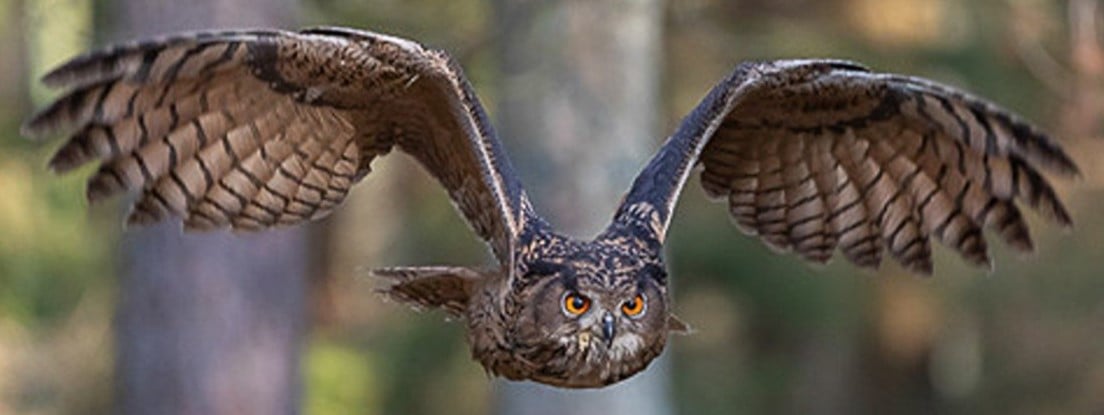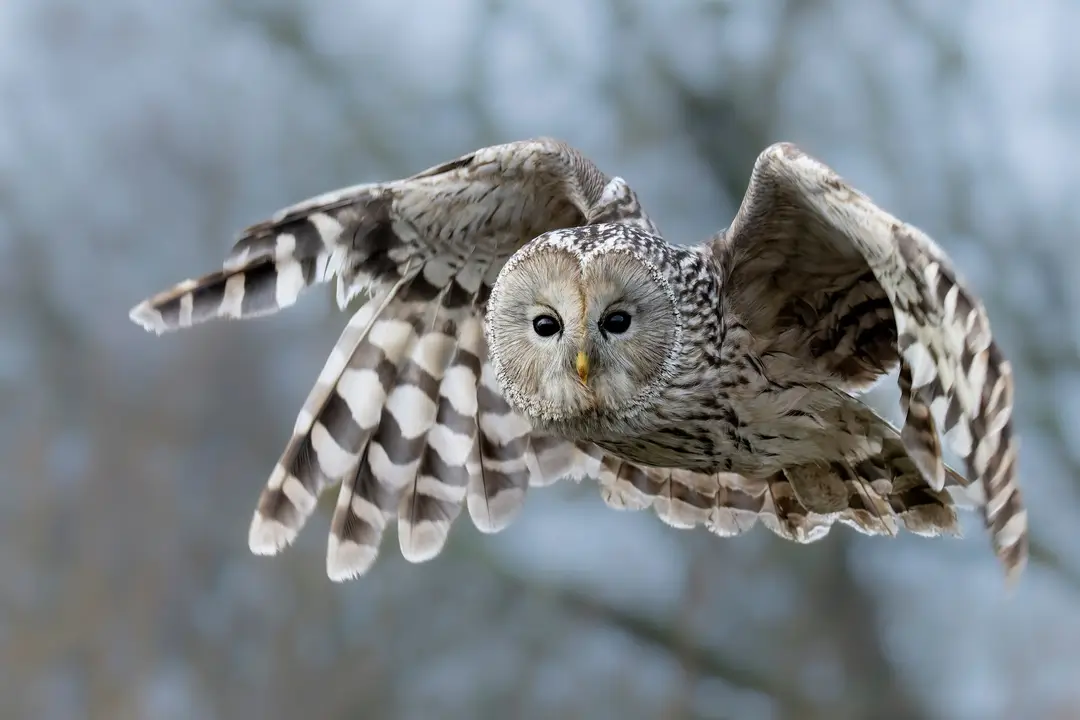Superbowl
For owls that are superb.

US Wild Animal Rescue Database: Animal Help Now
International Wildlife Rescues: RescueShelter.com
Australia Rescue Help: WIRES
Germany-Austria-Switzerland-Italy Wild Bird Rescue: wildvogelhilfe.org
If you find an injured owl:
Note your exact location so the owl can be released back where it came from. Contact a licensed wildlife rehabilitation specialist to get correct advice and immediate assistance.
Minimize stress for the owl. If you can catch it, toss a towel or sweater over it and get it in a cardboard box or pet carrier. It should have room to be comfortable but not so much it can panic and injure itself. If you can’t catch it, keep people and animals away until help can come.
Do not give food or water! If you feed them the wrong thing or give them water improperly, you can accidentally kill them. It can also cause problems if they require anesthesia once help arrives, complicating procedures and costing valuable time.
If it is a baby owl, and it looks safe and uninjured, leave it be. Time on the ground is part of their growing up. They can fly to some extent and climb trees. If animals or people are nearby, put it up on a branch so it’s safe. If it’s injured, follow the above advice.
For more detailed help, see the OwlPages Rescue page.
view the rest of the comments

Wow, this is beautiful!
I'd heard eule before, but not kauz.
English only has one word, French has chouette and hibou, and Spanish has a lot of words, the main ones being buho (seems most common, and more specifically larger, horned owls), lechuza (barn owls), and the Mexican word tecolote (screech owl or possible pygmy owls, so seems more for small owls rather than horn/no horn). There's a few more words I've seen, but most comments seemed to say if you use anything other than buho or lechuza, no one will know what you're talking about.
The list of German owls does seem to split between eule and kauz right around the middle. I feel it's a pretty good system!
As you were wondering about the translations: Schleiereule - "Veil Owl"
Zwergohreule - "Dwarf Ear Owl"
Schnee-Eule - "Snow Owl"
Sperber-Eule - "Sparrowhawk Owl"
Sperlingskauz - "Sparrow Owl"
Steinkauz - "Stone Owl"
Waldkauz - "Forest Owl"
Habichtskauz - "Goshawk Owl"
Waldohreule - "Forest Ear Owl"
Sumpfohreule - "Swamp Ear Owl"
Rauhfußkauz - "Scraggly Foot Owl"
Thank you so much! It's so interesting to see the other names people have come up with for the same things.
Ones I like better: Zwergohreule Sperber-Euhle Both of these I think describe them better than the English names.
Ones I don't get: Habichtskauz - I did not think it looked like the Goshawk. The Sperber-Euhle I liked because it looked more like a Sparrowhawk than the Red-Tailed Hawk, which is the default hawk for my brain.
Rauhfußkauz - The legs/feet look pretty typical to me.
Not sure if I like Steinkauz better than Little Owl. Little Owl sounds cute, but is hard to tell Little Owl vs a little owl, while stone owl is appropriate for size, but does not reflect they are cute, unless Germans have particularly cute rocks over there. 😄
According to German Wikipedia, the Rauhfußkauz has its name from its feathered feet. But it isn't the only one, as e.g. the Snowy Owl also has this feature.
I would have named him over that big round head. Trying to look up any direct translation to German for "big-headed" all seem to translate to mean arrogant rather than a physical feature. The closest I found is another bird, Brauenbreitschnabel, which says it means "Broad Headed Beak" but I don't think that looks to have a particularly large head, so I don't know if that is correct either.
He German Wikipedia of the Habichtskauz says:
The name Steinkauz refers to the location they use for breeding, which are, beside tree hollows, barns, chapells and wine cellars built of stone.
That was my guess about Habichtskauz, but to me the standout feature of this particular owl is the face. From skimming the German wiki for it, even though it looks gentle, it seems very territorial and aggressive, so that may also factor into the hawk similarities, but I don't have either bird where I am to make much comparrison.
Steinkauz makes better sense now, being named after where it is living. Reminds me of the Rock Eagle Owl.
Thank you for all your insights today! I have really learned a lot from all this!
Or the Barn Owl which commonly is found in barns.
I like Barn Owl a little less, along the line of the joke that always comes up of "what did they call them before barns were invented." Plus Barn Owls are basically everywhere, not just relegated to places there are barns. Veiled Owl works in every occasion, though when I ran the translate feature on the German wiki for the Ural Owl, it seemed to translate the word it had for facial disc, so maybe that is a word that refers to too many owls in German. (Just checked, Gesichtsschleier is the word it was translating to "facial veil")
Looking at the list again, it's interesting Barn Owl is an euhle as it has a round head. Many other languages also seem to separate out the barn owl types. That seems to lend support to the "personality traits" explaination of the euhle/kauz differences.
See it the other way around: A barn isn't a proper barn without accommodating a Barn Owl.
However, in German, some birds are called by their current habitat: Feldlerche (Eurasian Skylark), Feldsperling (Eurasian Tree Sparrow), Haussperling (House Sparrow), Hausrotschwanz (Black Redstart), Gartenrotschwanz (Common Redstart), ... Yet, one may ask: Where did they live before there were fields, houses, and gardens?
Linguistic separation of the Barn Owls from the True Owls makes somewhat sense as they are the two separate families of the owls.
In the German Wikipedia article on owls Strigiformes I also found an explanation of the origin of the two terms Eule and Kauz:
Interestingly, the Eulen you are not supposed to carry to Athens (Eulen nach Athen tragen means doing something useless), are originally Steinkäuze (Athene Noctua) that were a symbol of the godess Athene and were depicted on the reverse side of the old Drachme coins from Athens.
Today, this Drachme coin is depicted on the reverse side of the Greek 1 Euro coin:
Thank you for the nice conversation.
Animal sound words can be so funny. I imagine our native ones all make sense to us, as it's what we learned growing up, but hearing some in other languages seem bewildering. Even after listening to the kauz pronunciationg (surprise T sound in there would have tricked me!) I don't know how that relates to an owl.
I was familiar with the Little Owl being the Owl of Athena and on the old coin, but I forgot it was on the new one. I like how they keep the ancient design still. That feels like a nice tradition.
You've helped me understand a lot of new things. It's been much fun!